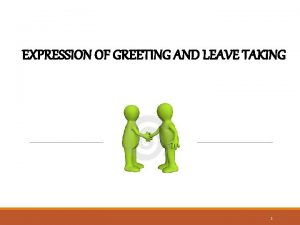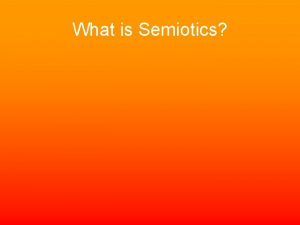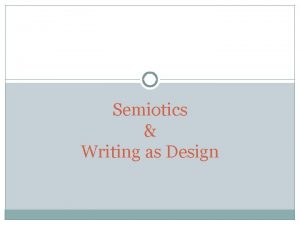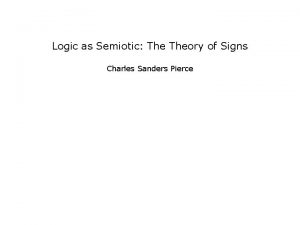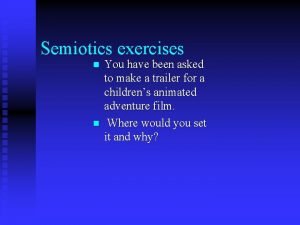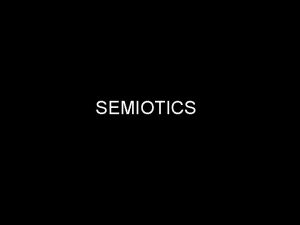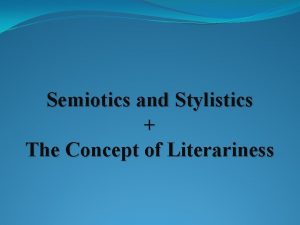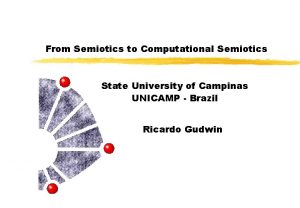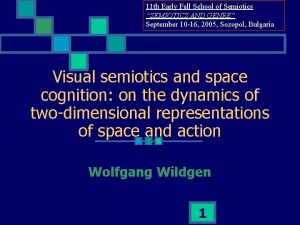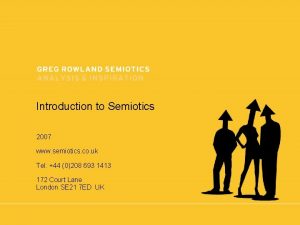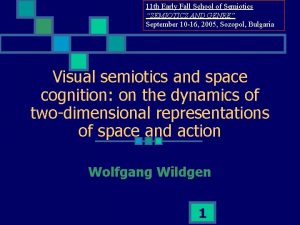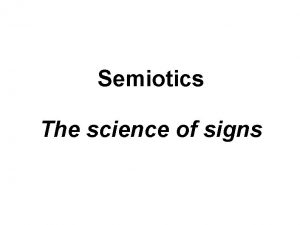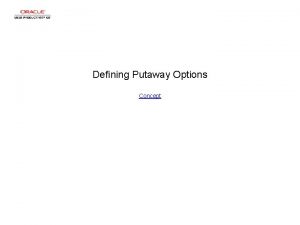Semiotics Defining and Introducing Concepts Semiotics n Semiotics


















- Slides: 18

+ Semiotics Defining and Introducing Concepts

+ Semiotics n Semiotics is, simply, the study of signs. As a culture, we see and understand signs all the time: stop signs, open or closed signs, signs telling us which is a male or female bathroom, etc. n Silverman and Rader define sign as “an object or idea or combination of the two that refers to something besides itself, and it depends on others to recognize that it is a sign (6). n In other words, signs get their meanings due to culture, history, experience, etc.

+ Components of a sign n Saussure, one of the creators of semiotics, argued that a sign is composed of two parts: the signifier and the signified. n Together, the two create a sign and that creates meaning. n Signifier: Object that exists n Signified: what it means

+ Example

+ Denotation n When you describe what you are actually seeing, you are describing the denotation of a text or reading it on a denotative level n This means that you are just reading the surface of a text

+ Connotation n The signified is what you associate with what you are physically seeing n This is usually influenced by your culture, your experience, your memories, your history, where you are, etc. n When you look for the deeper or hidden meanings of a text, you are looking at it on a connotative level n Let’s try some examples of denotation and connotation.

+ Example 1:

+ Example 2:

+ Example 3:

+ Making Meaning “The world is open to interpretation” (Silverman & Radar 6) n Multiple meanings & interpretations n n Influenced by background n n Different connotations to everything read and observe n Like figurative language (multiple meaning) Every text you read, as you interpret, you bring all your knowledge of everything else you read and observe System of Reading n n “We can interpret images, words whose letters are arbitrarily assigned meaning” (Silverman & Radar 8) Same signified with different meaning: pop, soda, Coke

+ Cat

+ Is there an essential form of catness or Katniss?

+ Semitotic Situations n “When we try to make sense of our surroundings or interpret one aspect of our surroundings based on the signs or texts of our situation” (Silverman & Rader 10). n “Read between the lines” (Silverman & Rader 10).

+ The Body as a Text n Our body is read as a text n Deciphered to be read according to societal standards. n Look for cultural signs-signifiers (pants, long hair, etc).

+ The Body as a Text

+ Font vs. Font

+ ICONS

+ OUTCASTS/(SUB)CULTURES
 Defining and non-defining relative clauses
Defining and non-defining relative clauses Relative clauses defining and non defining
Relative clauses defining and non defining Non defining
Non defining Defining and non defining relative clauses in telugu
Defining and non defining relative clauses in telugu Defining or non defining relative clause
Defining or non defining relative clause Relative clauses örnekleri
Relative clauses örnekleri Introducing and naming new products and brand extensions
Introducing and naming new products and brand extensions Introducing and naming new products and brand extensions
Introducing and naming new products and brand extensions Introducing phonology answer key
Introducing phonology answer key Leave taking expression and response
Leave taking expression and response Saussure dyadic model
Saussure dyadic model Roland barthes codes
Roland barthes codes Example of a myth
Example of a myth Semiotics
Semiotics Semiotics
Semiotics Semiotics
Semiotics Semiotics
Semiotics Semiotics exercise
Semiotics exercise Semiotics
Semiotics









